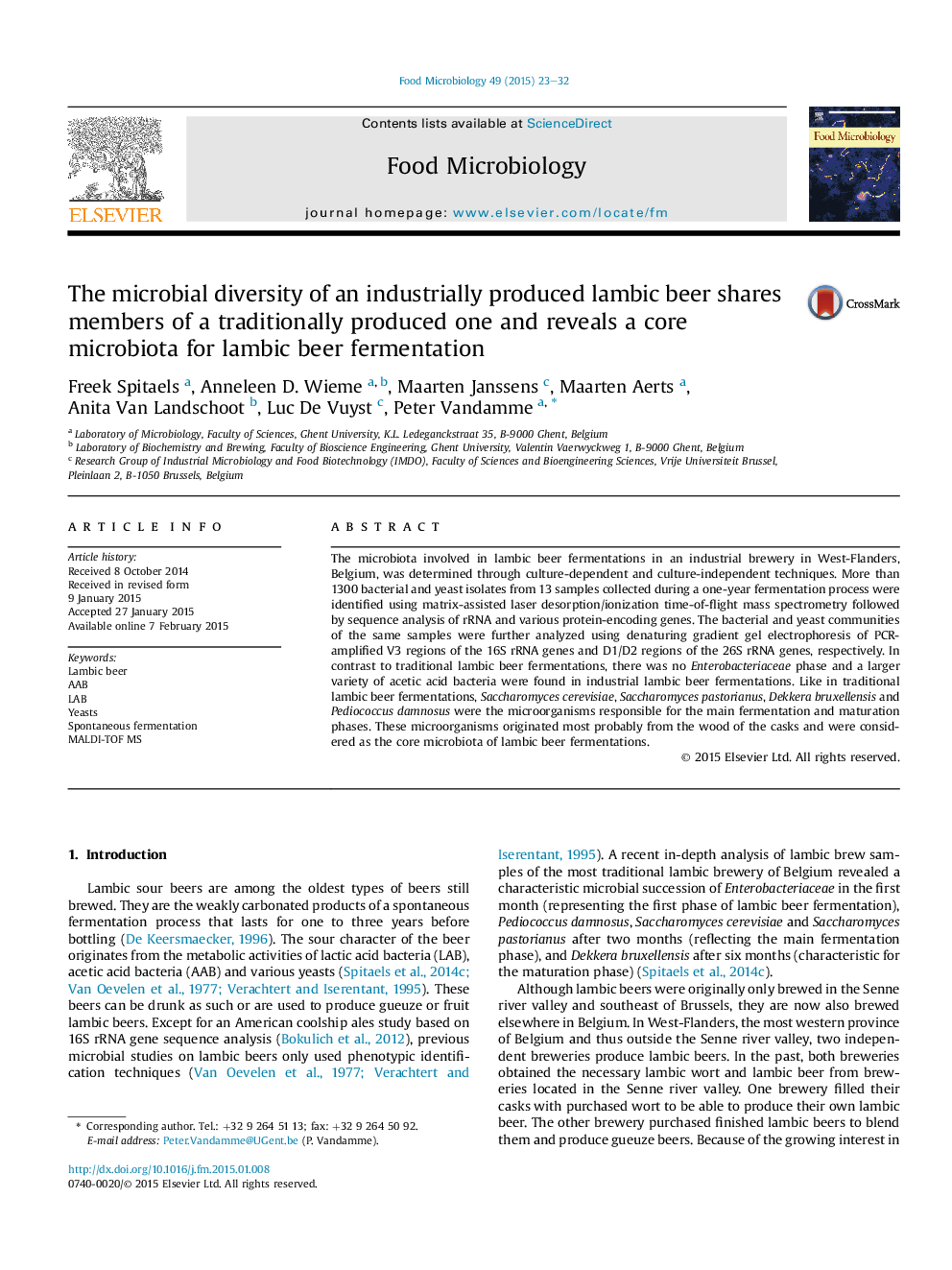| Article ID | Journal | Published Year | Pages | File Type |
|---|---|---|---|---|
| 4362729 | Food Microbiology | 2015 | 10 Pages |
•Lambic beer fermentations contain the same core microbiota.•Pediococcus damnosus is the only LAB present in the lambic beers studied.•Industrially produced lambic wort is not inoculated in the cooling tun.•Sluggish lambic beer fermentations can be steered by mixing with other batches.•No Enterobacteriaceae phase is present in industrial lambic beer fermentations.
The microbiota involved in lambic beer fermentations in an industrial brewery in West-Flanders, Belgium, was determined through culture-dependent and culture-independent techniques. More than 1300 bacterial and yeast isolates from 13 samples collected during a one-year fermentation process were identified using matrix-assisted laser desorption/ionization time-of-flight mass spectrometry followed by sequence analysis of rRNA and various protein-encoding genes. The bacterial and yeast communities of the same samples were further analyzed using denaturing gradient gel electrophoresis of PCR-amplified V3 regions of the 16S rRNA genes and D1/D2 regions of the 26S rRNA genes, respectively. In contrast to traditional lambic beer fermentations, there was no Enterobacteriaceae phase and a larger variety of acetic acid bacteria were found in industrial lambic beer fermentations. Like in traditional lambic beer fermentations, Saccharomyces cerevisiae, Saccharomyces pastorianus, Dekkera bruxellensis and Pediococcus damnosus were the microorganisms responsible for the main fermentation and maturation phases. These microorganisms originated most probably from the wood of the casks and were considered as the core microbiota of lambic beer fermentations.
